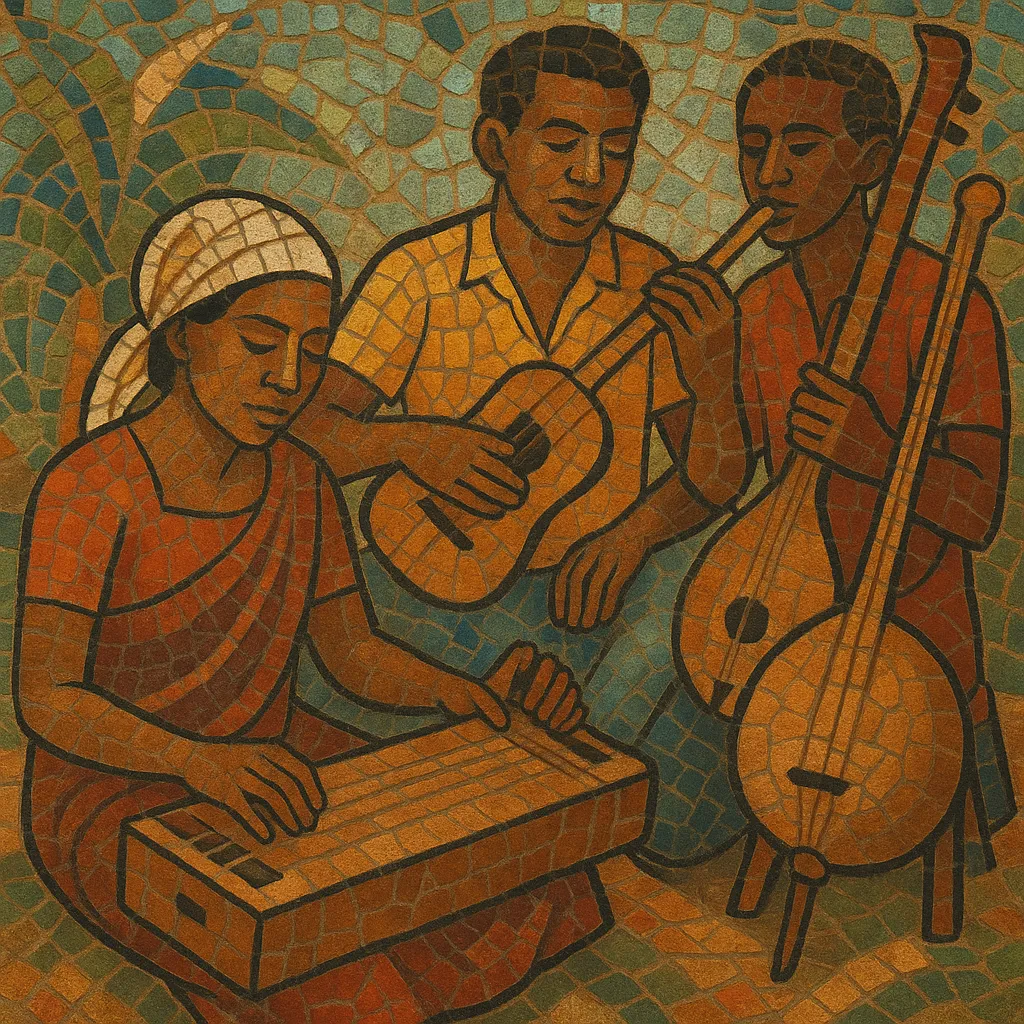
Malagasy folk music refers to the diverse traditional and roots styles found across Madagascar, shaped by the island’s Austronesian heritage and centuries of East African and Indian Ocean exchange.
It is characterized by intricate string timbres from zithers such as the valiha (bamboo tube zither) and marovany (box zither), the bright, percussive kabosy (box guitar), aerophones like the sodina (end-blown flute), and regional bowed or fiddled instruments (jejy voatavo, lokanga). Vocal music ranges from tight, polyphonic choral textures (e.g., beko of the south) and responsorial singing to narrative and ceremonial forms linked to public oratory (kabary). Rhythms often move in lilting 6/8 or 12/8 cycles, with polyrhythmic handclaps and drum patterns.
Major regional expressions include highland hira gasy (musical-theatrical troupes mixing music, dance, satire, and speech), southern Antandroy and Mahafaly vocal traditions, and coastal dance forms whose grooves later catalyzed modern styles. While today’s popular salegy and tsapiky are contemporary, their core aesthetics—driving interlocking rhythms, call-and-response, and cyclical forms—derive directly from older Malagasy folk practices.
Malagasy folk music grows from the island’s Austronesian settlement (linguistic and cultural links to Borneo) layered with subsequent African coastal interactions. By the 18th century, courtly and communal musical forms in the central highlands (Merina/Betsileo) coalesced around the valiha and structured public events that combined music, moral storytelling, and oration.
Hira gasy emerged in the 1700s, especially under highland rulers, as a participatory musical theatre with ensembles of singers, dancers, and instrumentalists, punctuated by kabary (formal speeches). Regional traditions flourished: polyphonic beko in the south, ritual and work songs along coasts, and instrumental idioms on valiha, marovany, sodina, and kabosy. In the 19th century, contact with Europeans introduced guitars, violins, accordions, and new ensemble formats, which blended with local tunings and rhythms.
French colonial rule and later radio diffusion spread regional styles nationwide. Highland “old-time” repertoires, ceremonial music, and coastal dance grooves circulated more widely. The foundational aesthetics—cyclic forms, interlocking patterns, antiphonal singing—remained central while instrumentation modernized in some contexts.
From the 1970s onward, Malagasy roots musicians brought traditional idioms to international stages. Valiha masters, acoustic guitar innovators, and vocal ensembles showcased the island’s polyrythmic and polyphonic richness. Meanwhile, coastal folk grooves underpinned new popular genres such as salegy (north) and tsapiky (southwest), which retain folk DNA in their rhythmic cycles, call-and-response, and modal contours. Today, Malagasy folk continues as both living community practice and a source for contemporary fusion and world stages.

